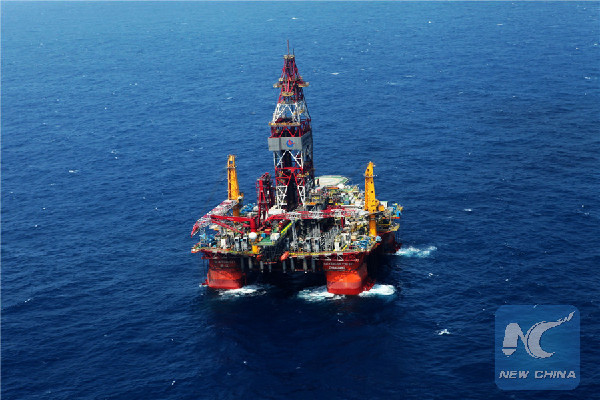China's reef construction helps with ecology in S. China Sea
- By Lin Yongxin
 0 Comment(s)
0 Comment(s) Print
Print E-mail China.org.cn, August 10, 2016
E-mail China.org.cn, August 10, 2016
|
|
|
File photo shows the 981 drilling platform of China Oilfield Services Limited (COSL), 17 nautical miles (some 31 kilometers) from Zhongjian Island of China's Xisha Islands, South China Sea. (Xinhua photo) |
The international arbitration tribunal ruled against China's legitimate acts in the South China Sea on July 12, regardless of China's indisputable historical sovereignty over the islands and reefs in those waters. The ruling also accused China of disrupting the ecology and environment by construction activities on those islands.
Has China's construction on those islands really caused irreversible damage to the coral reef ecological system as the United States and the Philippines claim?
First, rational planning and green construction technologies can effectively control the impacts of the reclamation on the surrounding ecological system. Reports made by the Chinese State Oceanic Administration showed that targeted protective measures for coral reefs were included in China's construction activities.
Specifically, the construction has fully considered the lifespan of corals and made corresponding schedules. Preliminary studies show that corals grow best when seawater temperature is between 23 and 28 degree Celsius; in tropical waters, this temperature occurs in the winter and spring. Therefore, China's constructions have been following proper arrangements in terms of progress and intensity.
The construction tries to lower the impact on coral reef environment. Given that corals usually live in shallow waters less than 50 meters from the ocean surface and have strict demands regarding the water's translucency, China's construction has been controlling the diffusion of floating particles to minimize their influence on the seawater's cleanliness.
The sites of construction were the results of rational consideration in that they are where the corals were mostly dead or places unfit for coral growth.
In addition, Chinese and international scientific studies both show that transplantation and horticultural breeding can effectively reestablish the coral population. From 2013 to 2015, Chinese scientists experimented with such transplantation and they managed to raise the coral coverage in the experiment area by 5-8 percent. The practice set a good example for the reestablishment of biological populations in the future.
Second, China's land reclamations based on the islands and reefs in the South China Sea are rational exploration as per the regulations of the United Nations Convention on the Law of the Sea (UNCLOS), which not only defines all countries' commitments to preserving and protecting the maritime environment but also gives them rights to explore it.
Around the world, many ports were actually built on land reclamation, such as the North Abaco Port of the Bahamas and the Suakin Port of Sudan. China's land reclamation is aimed at improving the living conditions for people on the islands as well as to provide more international public services to the region.
The rational explorations of the resources based on the preservation of the local ecological systems are more consistent with the UNCLOS than passively keeping that region intact.
By contrast, fishermen from Vietnam and the Philippines use poisons and explosives to catch fish, which causes irreversible damage to the coral reefs in the Nansha Islands. Facts show that compared with China's land reclamation on coral reefs, the United States and the Philippines should pay more attention to overfishing and the improper fishing activities of Filipinos.
Third, China established a meteorological station on the reefs, and a maritime observation center, among other scientific facilities and civilian facilities conducive to strengthening the ecological systems in the South China Sea.
As China continues to construct on these islands, the deployment of more civilian facilities will help China to monitor the maritime environment, meteorological conditions, and the data obtained will substantiate future scientific studies. They will also help with China's plans to build maritime natural reserves, ecological environment research bases in the future.
Apart from enhancing biodiversity in the region, China will also join hands with other countries in the South China Sea for cooperation on pollution control and environmental monitoring, as part of China's regional and global commitment.
Lin Yongxin is the deputy chief of the Research Center for the Maritime Silk Road at the National Institute for South China Sea Studies.
The article was translated by Chen Boyuan. Its original version was published in Chinese.
Opinion articles reflect the views of their authors, not necessarily those of China.org.cn.







Go to Forum >>0 Comment(s)